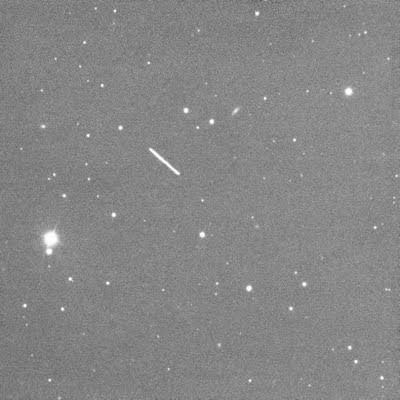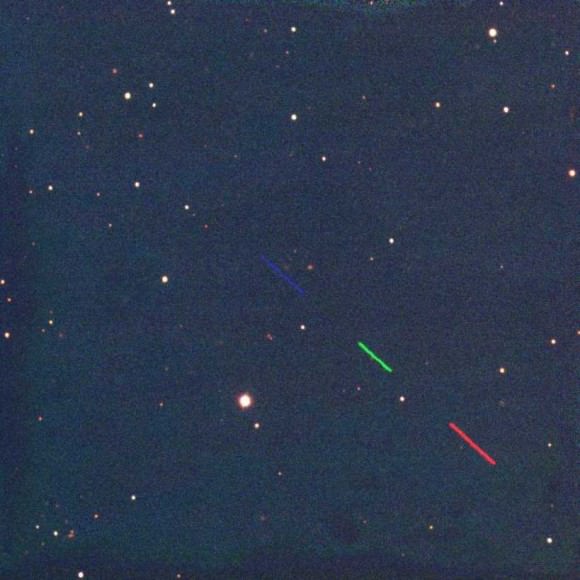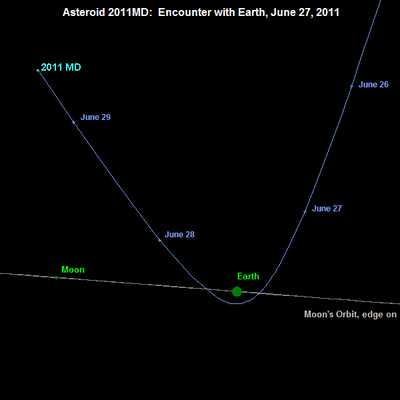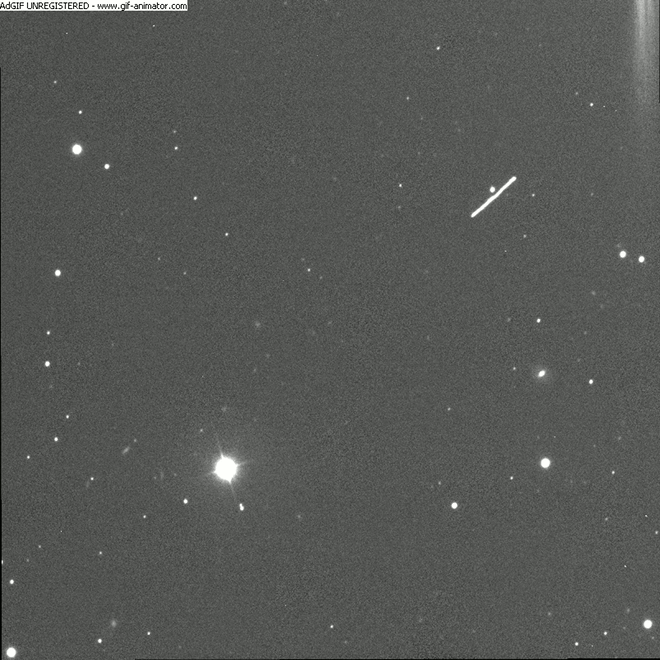[/caption]
Today, Monday June 27 at about 17:00 UT, asteroid designated as 2011 MD will pass only 12,300 kilometers (7,600 miles) above the Earth’s surface. Here are some images and an animation of the asteroid’s close approach taken around 09:30 UT taken by Ernesto Guido, Nick Howes and Giovanni Sostero at the Faulkes Telescope South through a 2.0-m f/10.0 Ritchey-Chretien and a CCD. The trio of astronomers say that at the time these images were taken, the asteroid had a magnitude of about 14.5. At the moment of its close approach, 2011 MD will be bright as magnitude ~11.8.
The animation above shows the object’s movement in the sky. Each image was 20-second exposure.
See more below from Guido, Howes and Sostero.
Below is a single 20-second exposure also taken by the 2 meter telescope at Faulkes Telescope South, and just below that is another image using a RGB filter.


Some early observers have suggested that 2011 MD — which is only 5-20 meters in diameter — could possibly be a piece of space junk, such as a rocket booster. However, additional observations and further calculations show that this asteroid could not have been close enough to Earth any time during the space age to have started off as a rocket booster.

Thanks to Ernesto Guido, Nick Howes and Giovanni Sostero for sharing their image with Universe Today. See more of their work, as well as more information about asteroid 2011 MD at their Remanzacco Observatory website. See here for more information on the Faulkes Telescope.
Again, scientists at NASA’s Asteroid Watch program at JPL say there is no danger of the asteroid hitting Earth. “There is no chance that 2011 MD will hit Earth but scientists will use the close pass as opportunity to study it w/ radar observations,” they said on the the @AsteriodWatch Twitter feed. “Asteroid 2011 MD measures about 10 meters. Stony asteroids less than 25 m would break up in Earth’s atmosphere and not cause ground damage.”


Is it unusual for an asteroid to come in from so high off the ecliptic plane (as the last image suggests)?
I just saw a falling object burning bright in the atmosphere (white core, yellow, green and some red around the edges). It dropped smaller bits behind itself while falling and went out in an instant.
I’m located in southern Sweden (Västra Götaland) and was looking to the east. The time was around midnight and from my perspective of the angle it was falling towards the south.
Could it be connected to this 2011 MD?
Many colors represent many minerals, I might suggest a small sattelite, or some man-made debris, as most space rocks have a high content of iron and ice. But I might be mistaken, because my professor said that it might be because of the gases it burned while falling through the atmosphere. I watched a glorious sat one night for an hour, it was seen from Canada to Mexico and fell into the Gulf of Mexico.
Here’s a link to a great animated video from 2011 MD POV (Not my work, although I wish it were!)
Here is good quality animation show the asteroid2011md Thank you very much .